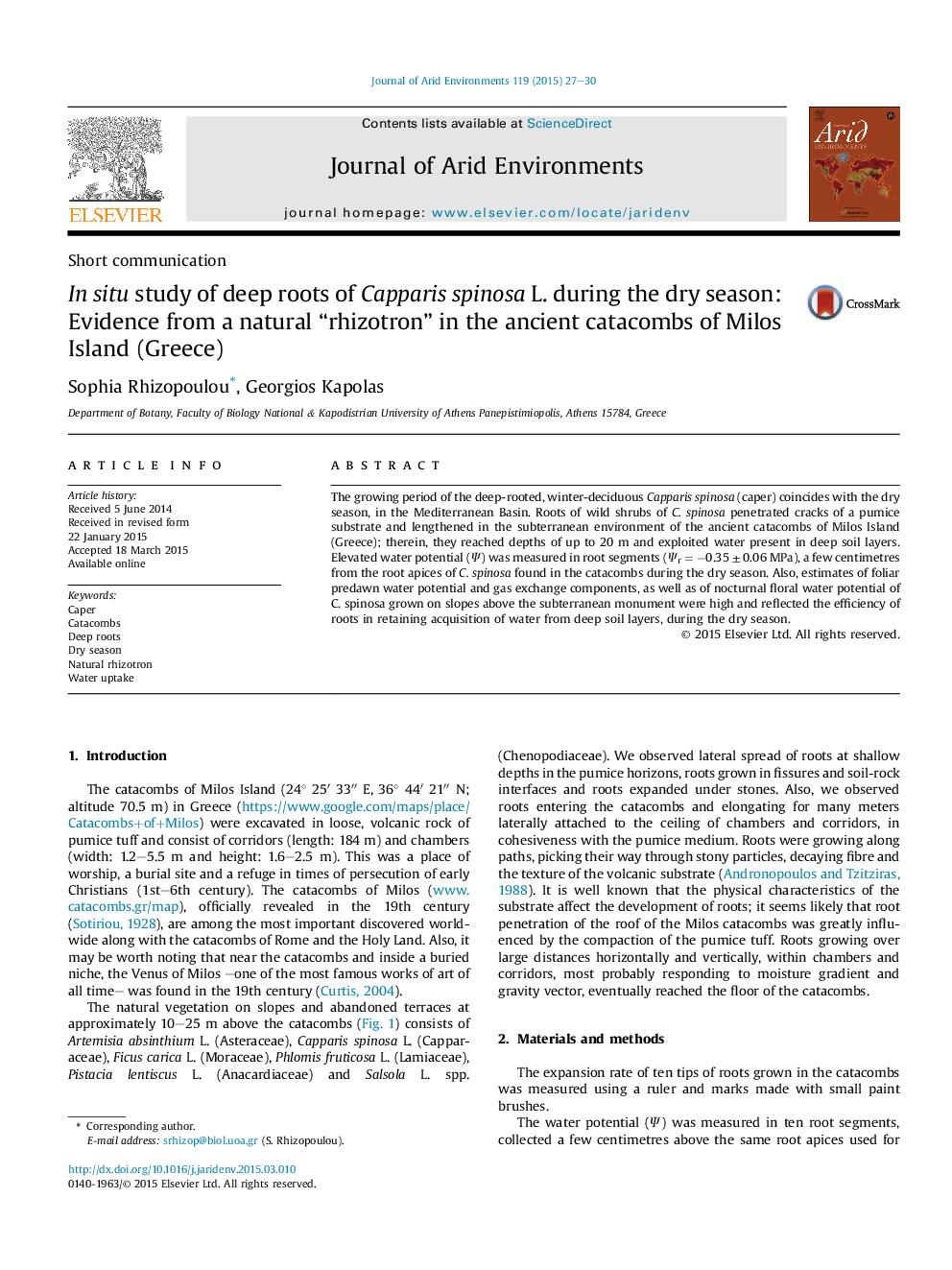| Article ID | Journal | Published Year | Pages | File Type |
|---|---|---|---|---|
| 6303415 | Journal of Arid Environments | 2015 | 4 Pages |
Abstract
The growing period of the deep-rooted, winter-deciduous Capparis spinosa (caper) coincides with the dry season, in the Mediterranean Basin. Roots of wild shrubs of C. spinosa penetrated cracks of a pumice substrate and lengthened in the subterranean environment of the ancient catacombs of Milos Island (Greece); therein, they reached depths of up to 20 m and exploited water present in deep soil layers. Elevated water potential (Ψ) was measured in root segments (Ψr = â0.35 ± 0.06 MPa), a few centimetres from the root apices of C. spinosa found in the catacombs during the dry season. Also, estimates of foliar predawn water potential and gas exchange components, as well as of nocturnal floral water potential of C. spinosa grown on slopes above the subterranean monument were high and reflected the efficiency of roots in retaining acquisition of water from deep soil layers, during the dry season.
Related Topics
Physical Sciences and Engineering
Earth and Planetary Sciences
Earth-Surface Processes
Authors
Sophia Rhizopoulou, Georgios Kapolas,
